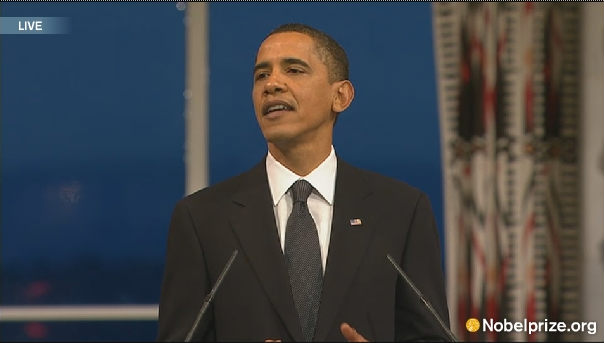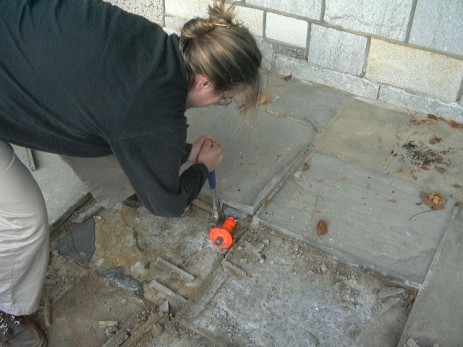This interview is part of a series on people who are making their communities smarter, greener places to live. Got a nomination? Leave it in the comments section or send it along to us.
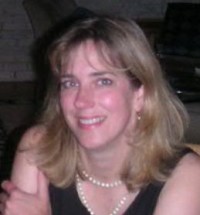 Redoing a kitchen? Hosting a national convention? Demolishing a school? Things are bound to get trashy, and that’s where Amy Bauman comes in. A former financial analyst, Bauman founded a nonprofit called greenGoat in 2001 to help Boston-area architects and contractors green their projects and create less waste. From consulting on LEED plans to finding new uses for cast-off materials, the small greenGoat team has worked with clients ranging from homeowners to the Democratic National Convention. Their aim: a zero-waste construction experience. Bauman, eager to learn more about green building and inspired by the success of Green Drinks, has also started a series called Green Thinks, in which she organizes small excursions to innovative projects in the area. We caught up with her to find out more about her one-woman quest to make Boston a cleaner, greener place.
Redoing a kitchen? Hosting a national convention? Demolishing a school? Things are bound to get trashy, and that’s where Amy Bauman comes in. A former financial analyst, Bauman founded a nonprofit called greenGoat in 2001 to help Boston-area architects and contractors green their projects and create less waste. From consulting on LEED plans to finding new uses for cast-off materials, the small greenGoat team has worked with clients ranging from homeowners to the Democratic National Convention. Their aim: a zero-waste construction experience. Bauman, eager to learn more about green building and inspired by the success of Green Drinks, has also started a series called Green Thinks, in which she organizes small excursions to innovative projects in the area. We caught up with her to find out more about her one-woman quest to make Boston a cleaner, greener place.
Q. You run a green-building nonprofit called greenGoat. Why did you start it up, what’s your mission, and where did the name come from?
 A. I began greenGoat to quell my personal frustration with waste levels in the construction industry. I used to get really upset seeing things being tossed into dumpsters with no apparent concern for reuse potential. Today, we try to stem the tide of waste by offering common-sense approaches to reuse and recycling plans. The name came from the goat’s proclivity for eating just about everything in sight.
A. I began greenGoat to quell my personal frustration with waste levels in the construction industry. I used to get really upset seeing things being tossed into dumpsters with no apparent concern for reuse potential. Today, we try to stem the tide of waste by offering common-sense approaches to reuse and recycling plans. The name came from the goat’s proclivity for eating just about everything in sight.
Q. What are some of the projects you’re most proud of?
A. I get a secret kick out of placing very hard-to-place items. One was an old, rusted set of industrial window shutters from the Boston Children’s Museum whose red paint had faded quite beautifully. I called a theater company and suggested that they’d make great set elements, and they immediately saw that. Although the shutters were thrashed by about a century of exposure, there’s a lot of beauty in the “work” that nature does on exterior building materials. I’m proud to be able to see it.
Other challenges are beautiful items that are very labor intensive to uninstall. We give things away all the time to people willing to expend their own labor, and I’m quite proud to have placed a slate roof in a pre-demolition setting. That took a lot of calls.
Q. What’s your dream project?
A. My dream would be to work with city building inspectors to develop a protocol for re-stamping reclaimed structural members (like beams) for reuse on site. They’re doing this on the West Coast, but I’m not aware of anyone doing this on the East Coast. In addition to steel I-beams, the approach would save the great old-growth wood beams, which adds a lot of warmth to building interiors. Right now, the best we can hope for is milling those into flooring.
Q. What are your thoughts about the federal government’s efforts to push efficiency and weatherization as climate and economic solutions?
A. I tend not to wait for Congress to solve problems. I guess I’m a bit conflicted … efficiency and weatherization make sense, but they’re not going to bring dramatic climate solutions people want. We’re based in Boston, and the region has a lot of old, leaky buildings. Needless waste of energy is just as stupid as tossing out a perfectly good piece of woodwork, so I agree in principle. I do believe that the priority of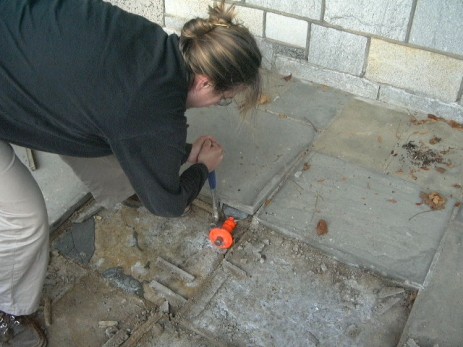 Bauman digs in, prying stone from a porch for reuse.Courtesy Amy Bauman “negawatts” over generating more energy to meet our needs is right. I like to watch design ideas that are emerging … PassivHaus is interesting, and I’m endlessly fascinated by technological solutions emerging in the field.
Bauman digs in, prying stone from a porch for reuse.Courtesy Amy Bauman “negawatts” over generating more energy to meet our needs is right. I like to watch design ideas that are emerging … PassivHaus is interesting, and I’m endlessly fascinated by technological solutions emerging in the field.
Q. OK, so in your spare time you founded a series called “Green Thinks,” an alternative to Green Drinks. How did that come about?
A. It was a completely selfish move to educate myself about the mechanical side of green building. It’s something that greenGoat hasn’t tackled yet, and I field a lot of questions about what works and what doesn’t. I thought it would be fun to take a group out into the world, to reassemble design teams at the project sites to talk about certain technologies … what worked, what didn’t, and surprises along the way. It’s a lot of fun … people from the industry and many interested interlopers show up to have a beer and ask questions. I think it’s important to have a “hype -ree” zone where no one is selling anything … just reviewing what the technology offered the site.
Q. What’s the most interesting “field trip” you’ve run through Green Thinks? What’s on the horizon?
A. The most interesting one for me was the one where I knew the least: EnerNOC and their smart grid technology. In a nutshell, they’ve developed a way to reach into subscribers’ buildings and selectively turn off lights (in a planned way) in the case that grid-wide usage begins to max out. Another really cool trip was to Nuvera, a hydrogen fuel cell company. Massachusetts is edging closer and closer to its next “tech boom.”
This month, our Green Thinks holiday party goes back in time to “luddite green”: Old Schwamb Mill in Arlington, a hydro-powered factory from the early 1800s. Not only is it beautiful, but it’s a great reminder that there are many great ideas that got their start when resources were scarce. It’s Yankee frugality at its best. We’re also trying to get on Logan Airport’s calendar to take a look at their mini-wind installation — one of the technologies I’m watching.
Q. If you could wave your magic wand and make one thing happen in the world of green building, what would it be?
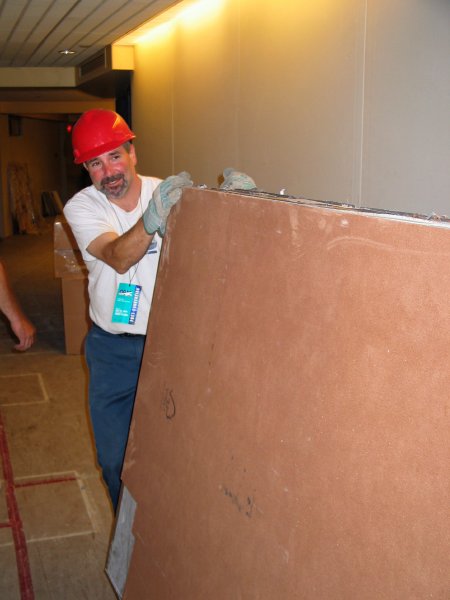 A worker at the 2004 Democratic National Convention takes masonite to a better place, with guidance from greenGoat.Courtesy Amy BaumanA. I’d make every city building inspector take eight paid hours of LEED training. It would be a great investment. Can I keep going? I’d make transfer stations and waste facilities really report how much they were recycling and how much was being shipped to another state. I’d invest in “mining” technology for finding metals in landfills and think about how to recapture lost assets. I’m not lacking in big dreams.
A worker at the 2004 Democratic National Convention takes masonite to a better place, with guidance from greenGoat.Courtesy Amy BaumanA. I’d make every city building inspector take eight paid hours of LEED training. It would be a great investment. Can I keep going? I’d make transfer stations and waste facilities really report how much they were recycling and how much was being shipped to another state. I’d invest in “mining” technology for finding metals in landfills and think about how to recapture lost assets. I’m not lacking in big dreams.
Q. What’s your advice for people who want to green their homes and/or communities?
A. If there is an environmental issue that really bugs you, start there. For me, it was waste. I decided (among other things) to turn off my waste dispose-all and start composting. Some of the home products reviewed right here in Ask Umbra really give me great ideas. In my home, it’s a mix of my own behavior and the stuff I buy every day.
As for community … plant trees and preserve open space. My town — Somerville, Mass. — is very urban, and we need all the trees we can get. The other problem my particular city has is that it’s nearly all paved. Probably the reason we don’t have trees! I’m trying to suggest test patches of pervious pavement, but … the city keeps waving me off. I keep coming back, though.
Q. Anything else you want people to know about your work?
A. greenGoat wants to work with manufacturers of building materials (and architects) on the concept of designing for deconstruction. For example, it’s very hard to reclaim carpet that has been glued in place. Welding is permanent; bolts are impermanent (and foster reuse). There are many methods of assembly that preclude reuse, and we’re of course very interesting in encouraging building owners and designers to think through the use of space to make it easy for spaces to be reconfigured in the future. Because of our constant exposure to taking materials out of spaces, we see installation methods that are either faulty or too permanent.
We are innovating all the time and growing into voids we see in the industry. For example, we now save landscaping that would be lost to demolition. It took a while to notice it, but … wow. It takes a lot of resources to bring a plant to maturity, and people don’t realize how much is lost. We like to find new ways to reintroduce patient conservation of assets into fast-paced projects. I live for that moment when I can show a client’s accountant the worth of what they were going to throw away … in dollars and in embodied energy. All we ask is the time to plan an orderly egress. The more time we’re given, the more we rescue.
